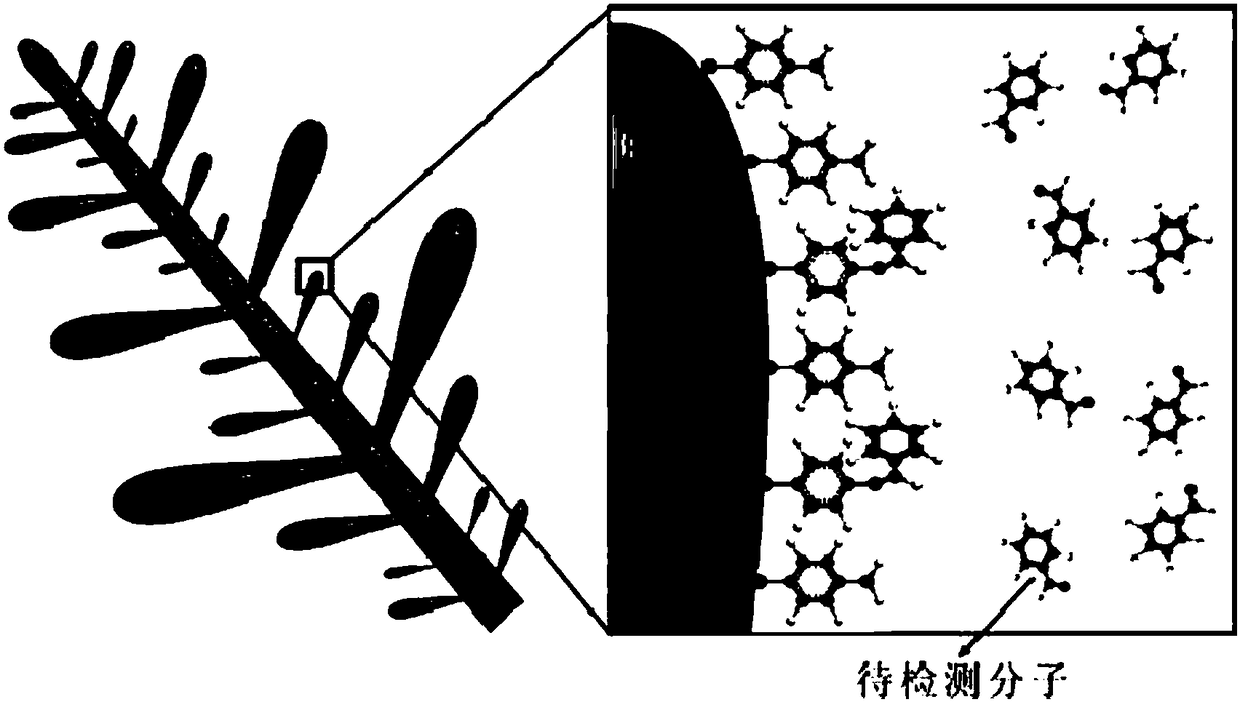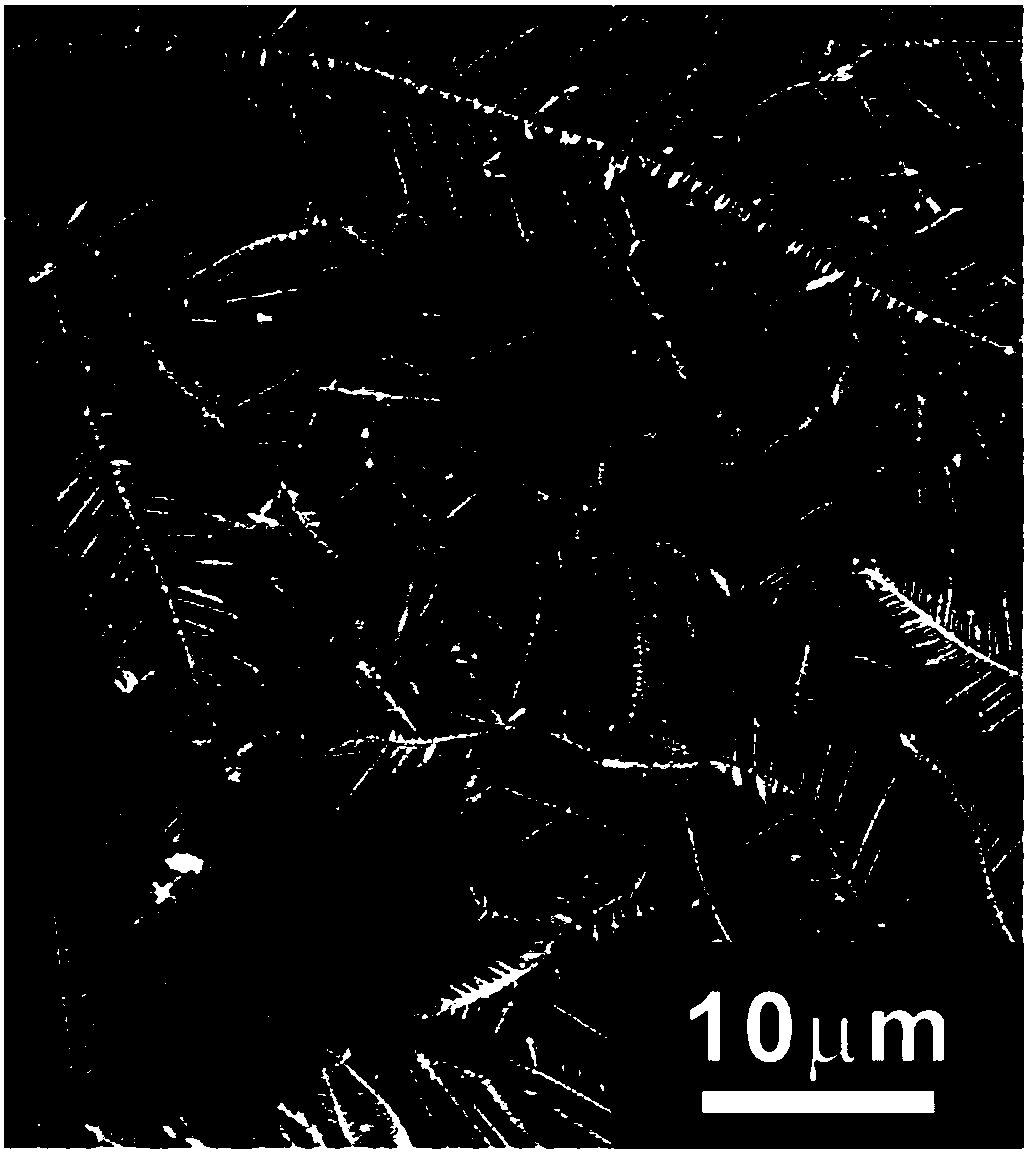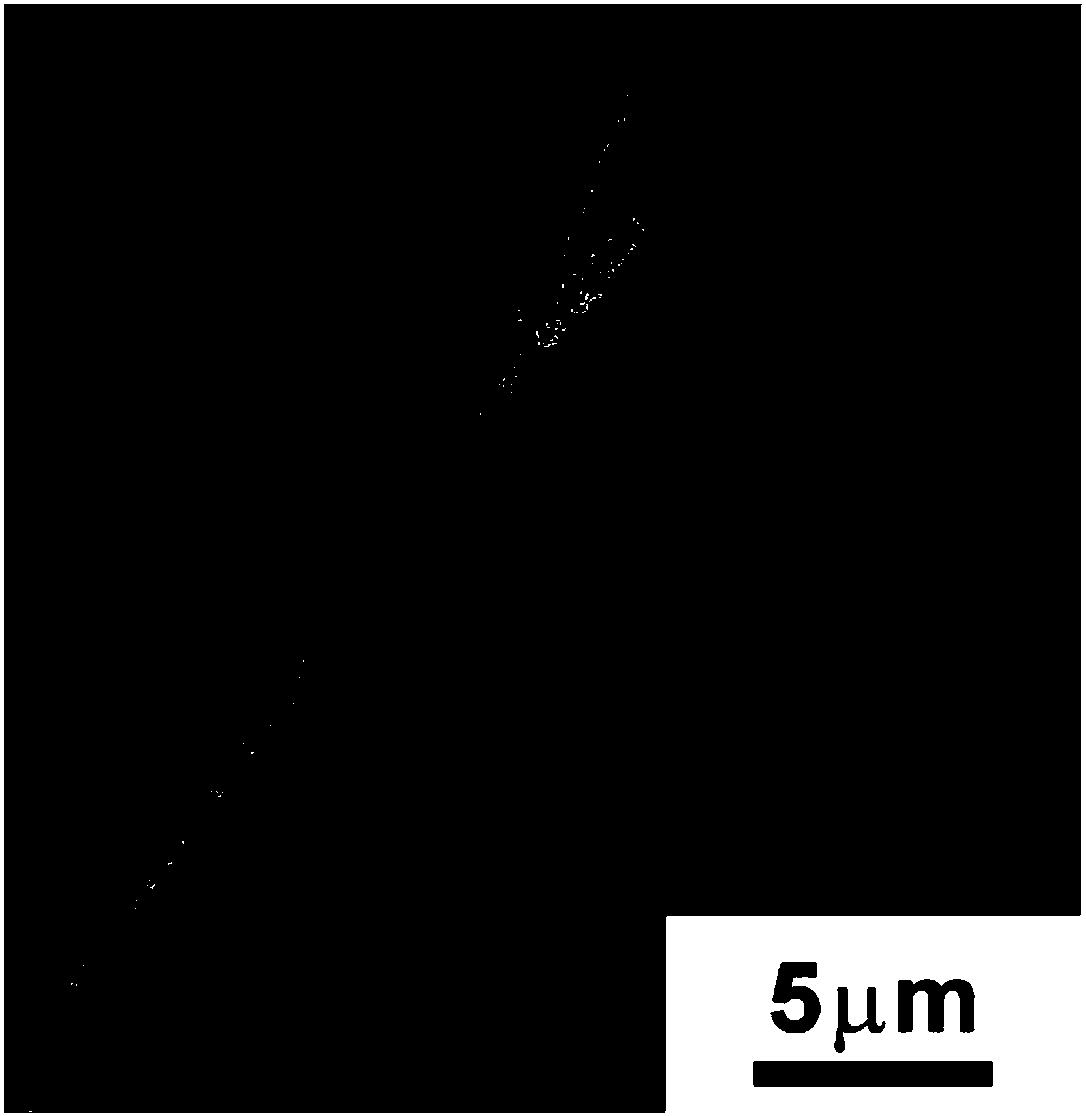Preparation method and gas detection method of surface-enhanced Raman scattering base material
A surface-enhanced Raman and substrate material technology, which is applied in Raman scattering, material analysis, material excitation analysis, etc., can solve the difficulty of ensuring the quality consistency of respiratory sensors, the difficulty of realizing SERS detection of molecules, and the reliability of preparation methods to be discussed, etc. problem, achieve high sensitivity and pertinence, less steps, and improve accuracy and sensitivity
- Summary
- Abstract
- Description
- Claims
- Application Information
AI Technical Summary
Problems solved by technology
Method used
Image
Examples
Embodiment 1
[0080] Preparation method of surface-enhanced Raman scattering substrate material:
[0081] (1) Dissolve 100 mg of silver nitrate in 10 mL of water to obtain an aqueous solution of silver nitrate, place the copper sheet in the silver nitrate solution, react at room temperature for 1 h, add ethanol after the reaction, and centrifuge to obtain dendritic silver nanocrystals.
[0082] The morphology of the dendritic silver nanocrystals obtained above is analyzed and detected, the SEM morphology is shown in Figure 2, and the TEM is shown in Figure 3. According to the test results, it can be seen that the dendritic silver nanocrystals prepared have a highly symmetrical structure, and the structure of the dendritic silver nanocrystals includes a main trunk with a length of 5-60 μm and a diameter of 50-2000 nm; side branches with a length of 0.5-40 μm and a diameter of 25-1000 nm; and these side branches are parallel to each other and connected to the trunk The angle between them is 5...
Embodiment 2
[0091] Preparation method of surface-enhanced Raman scattering substrate material:
[0092] (1) Dissolve 340 mg of silver nitrate in 10 mL of water to obtain an aqueous solution of silver nitrate, place the copper sheet in the silver nitrate solution, react at room temperature for 2 h, add ethanol after the reaction, and centrifuge to obtain dendritic silver nanocrystals.
[0093] The morphology of the dendritic silver nanocrystals obtained above was analyzed and detected, and the SEM morphology was consistent with Example 1. The dendritic silver nanocrystals prepared had a highly symmetrical structure, including: long 5-60 μm, diameter 50-2000nm Trunk; side branches with a length of 0.5-40 μm and a diameter of 25-1000 nm; and these side branches are parallel to each other, and the angle between them and the main body is 50°-70°.
[0094] The high-resolution TEM of dendritic silver nanocrystals is consistent with that of Example 1, and the interplanar spacing of the trunk and si...
Embodiment 3
[0102] Preparation method of surface-enhanced Raman scattering substrate material:
[0103] (1) Dissolve 3.4 mg of silver nitrate in 10 mL of water to obtain an aqueous solution of silver nitrate, place the copper sheet in the silver nitrate solution, react at room temperature for 3 h, add ethanol at the end of the reaction, and centrifuge to obtain dendritic silver nanocrystals.
[0104] The morphology of the dendritic silver nanocrystals obtained above was analyzed and detected, and the SEM morphology was consistent with Example 1. The dendritic silver nanocrystals prepared had a highly symmetrical structure, including: a length of 5-60 μm and a diameter of 50-2000 nm The main trunk; the side branches with a length of 0.5-40 μm and a diameter of 25-1000 nm; and these side branches are parallel to each other, and the angle between them and the main trunk is 50°-70°.
[0105] The high-resolution TEM of dendritic silver nanocrystals is consistent with that of Example 1, and the...
PUM
| Property | Measurement | Unit |
|---|---|---|
| concentration | aaaaa | aaaaa |
| diameter | aaaaa | aaaaa |
| diameter | aaaaa | aaaaa |
Abstract
Description
Claims
Application Information
 Login to View More
Login to View More - R&D
- Intellectual Property
- Life Sciences
- Materials
- Tech Scout
- Unparalleled Data Quality
- Higher Quality Content
- 60% Fewer Hallucinations
Browse by: Latest US Patents, China's latest patents, Technical Efficacy Thesaurus, Application Domain, Technology Topic, Popular Technical Reports.
© 2025 PatSnap. All rights reserved.Legal|Privacy policy|Modern Slavery Act Transparency Statement|Sitemap|About US| Contact US: help@patsnap.com



